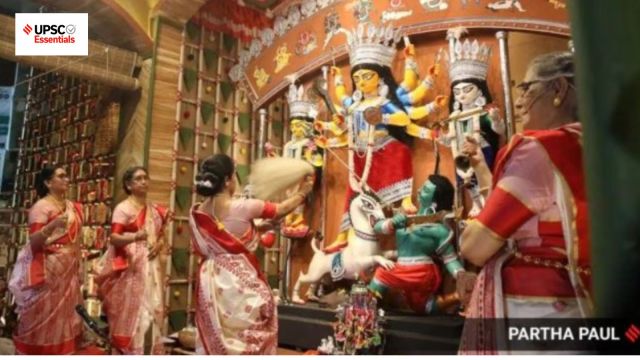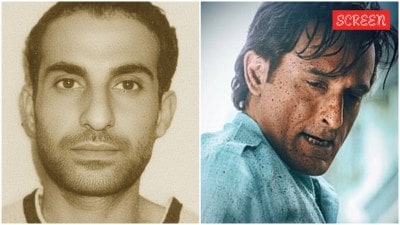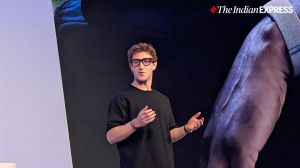QUESTION 1
Consider the following statements with reference to the history of UPSC:
1. At the time it was founded in 1926, under the Government of India Act, 1919, the UPSC was known as the Federal Public Service Commission.
2. When India became independent on August 15, 1947, the FPSC was headed by its first Indian chief, H K Kripalani.
Which of the above given statements is/are true?
(a) 1 only
(b) 2 only
(c) Both 1 and 2
(d) Neither 1 nor 2
Explanation
At the time it was founded on October 1, 1926, under the Government of India Act, 1919, the UPSC was known as the Public Service Commission. Before its current name, between 1937 and January 26, 1950, it was called the Federal Public Service Commission (FPSC). On October 1 this year, the highest recruiter of officials to the Indian government will enter its centenary year.
When India became independent on August 15, 1947, the FPSC was headed by its first Indian chief, H K Kripalani. After him, R N Banerjee headed the Commission from 1949 to 1955.
Therefore, b is the correct answer.
Story continues below this ad
(For more, refer: UPSC @ 100: The story of India’s top recruiter, Express Opinion, The Indian Express.)
QUESTION 2
Consider the following statements:
1. After the first Anglo-Sikh war of 1845-46, the state of Jammu and Kashmir, including Ladakh, was taken out of the Sikh empire and brought under British rule.
2. Ladakh was made a part of Jammu and Kashmir when Emperor Ranjit Singh acquired Kashmir in 1819.
Which of the following statements is/are true?
(a) 1 only
(b) 2 only
(c) Both 1 and 2
(d) Neither 1 nor 2
Explanation
Ladakh became part of Jammu and Kashmir through a complex historical process. As the Sikhs acquired Kashmir in 1819, Emperor Ranjit Singh turned his ambition towards Ladakh. Until then, it was an independent Himalayan kingdom, similar to Bhutan and Sikkim. It was made a part of Jammu and Kashmir in 1834 when Gulab Singh, the Dogra feudatory of the Sikh kingdom in Jammu and Kashmir, conquered the territory and made it a part of the Sikh empire.
Story continues below this ad
After the first Anglo-Sikh war of 1845-46, the state of Jammu and Kashmir, including Ladakh, was taken out of the Sikh empire and brought under British rule. “The state of Jammu and Kashmir was essentially a British creation, formed as a buffer zone where they could meet the Russians. Consequently, there was an attempt to delimiting what exactly was Ladakh and the extent of the state of Jammu and Kashmir, but it became convoluted since that area came under Tibetan and Central Asian influence,” researcher and international security analyst Abhijnan Rej told The Indian Express in a telephonic conversation in 2020.
Therefore, a is the correct answer.
(For more, refer: From independent kingdom to strategic frontier: Why Ladakh is integral to India’s history and geopolitics, Research, The Indian Express)
QUESTION 3
Consider the following statements:
1. Durga pujas in Bengal became a platform to celebrate the victory of the British East India Company in the 1757 Battle of Plassey.
2. With the onset of the 20th century, when Bengal became a hotbed of nationalist fervour, even Durga puja pandals turned into spaces of resistance and rebellion against the Raj.
Story continues below this ad
Which of the above given statements is/are not true?
(a) 1 only
(b) 2 only
(c) Both 1 and 2
(d) Neither 1 nor 2
Explanation
Historians argue that the earliest pujas became a platform to celebrate the victory of the British East India Company in the 1757 Battle of Plassey. “Clive… apparently advised both of them to celebrate the victory in a befitting manner,” note academics Samir Kumar Das and Bishnupriya Basak, in The Making of Goddess Durga, adding, “So the puja was celebrated in autumn in order to make it coincide with the occasion of victory and as the legend would have it they had spent over a lakh rupees each during those days”.
With the onset of the 20th century, Bengal became a hotbed of nationalist fervour. Even puja pandals turned into spaces of resistance and rebellion against the Raj. “If slight and humiliation played a role in making the transition to baroiyari puja possible, the same kind of slight and humiliation suffered by the native Indians in the hands of the colonial authorities were also responsible for the gradual infusion of the ‘nationalist spirit’ in the celebration,” opine Das and Basak in their work.
From the 1940s, Das and Basak note, “a substratum of ‘desperate young men well-endowed with muscle power’ emerged from within the communities of the Hindus and the Muslims who would not be afraid at the sight of the policemen and soldiers…” The ideals of nationalists, such as Bipin Chandra Pal and Aurobindo Ghosh, motivated the youth to participate in various physical activities to strengthen the mind and body.
Story continues below this ad
These pujas also became a platform to promote the Swadeshi Movement. Gupta writes, “The Baroiyari puja samities channelised the patriotic sentiments, also providing the platform to several leaders of the Indian nationalist movement for addressing the public”. The Nebu Bagan Baroiyari Durga Puja, started in 1919, was a fitting example. “Daker Saj [ornaments] was compulsory for the idols here, and the Kumartuli [an artisans’ colony in Calcutta] artisans added oriental design in the backdrop chali. The oriental design in the chali became the new style established by the clay modellers,” notes Gupta.
Therefore, d is the correct answer.
(For more, refer: From kings and landlords to communities and corporates :The changing face of Durga Puja, Research, The Indian Express)
QUESTION 4
With reference to history of India-Burma relations, consider the following statements:
1. The Simon Commission that arrived in Burma in 1929, with the purpose of assessing whether the region should be separated from India and made a distinct colony, concluded that Burma and India were two completely different countries.
Story continues below this ad
2. Mahatma Gandhi believed that Burma was a part of Bharatvarsha.
Which of the statements given above is/are true?
(a) 1 only
(b) 2 only
(c) Both 1 and 2
(d) Neither 1 nor 2
Explanation
The Simon Commission arrived in Burma on January 29, 1929, with the purpose of assessing whether the region should be separated from India and made a distinct colony. “Indeed, at the time,” notes Dalrymple in his book, “there was a huge amount of opposition to even separating Burma at all. Many Burmese worried that separation would eviscerate their thriving economy…” he writes. But the Commission had made up its mind even before reaching Rangoon that Burma was not part of India.
The Commission concluded that Burma and India were two completely different countries. Bhatia writes, “It favoured immediate separation…but it did not make any recommendation on what kind of constitutional order should be given to a Burma separated from India”.
Interestingly, Mahatma Gandhi also visited Rangoon in March the same year. While his speeches attracted a large crowd of people, his vision left the masses feeling dejected. Gandhi declared that Burma was not part of Bharatvarsha – later expanding, as Dalrymple cites, “it would only be worth the while of Burma to remain part of India if it means a partnership at will on a basis of equality with full freedom of either party to secede whenever it should wish”.
Therefore, a is the correct answer.
Story continues below this ad
(For more, refer: The India-Myanmar border: when deep cultural ties are tested and redrawn, Research, The Indian Express.)
QUESTION 5
Who is referred to as ‘Chero Napoleon’?
(a) Mahadaji Shinde
(b) Tirot Singh
(c) Medini Rai
(d) Begum Samru
Explanation
Their bows were basic, just a bent arc. Yet for the Chero (pronounced Chii-roe) archers of Palamau, the weapons were a symbol of defiance that defines their storied, if less-known, past.
The Chero were forever the ‘Davids’ of their story, prevailing against the ‘Goliath’ of the time: first the Mughals, and later, the British. The 17th-century folk hero Medini Rai, after whom Jharkhand’s Medininagar city is named, is remembered today as ‘Chero Napoleon’, according to a Prasar Bharati documentary on the tribes.
That’s why the moniker ‘Chero Archers’ for the Jharkhand franchise of the upcoming Archery Premier League is apt.
Story continues below this ad
The Archers will join the Prithviraaj Yodhas, Kakatiya Knights, Mighty Marathas, Rajputana Royals and Chola Chiefs for the inaugural edition of the APL, set to take place from October 2 to 12.
Therefore, c is the correct answer.
(For more, refer: Chero Archers: Jharkhand archery team pays tribute to legendary warrior clan, Explained, The Indian Express)
Subscribe to our UPSC newsletter and stay updated with the news cues from the past week.
Stay updated with the latest UPSC articles by joining our Telegram channel – IndianExpress UPSC Hub, and follow us on Instagram and X.


































